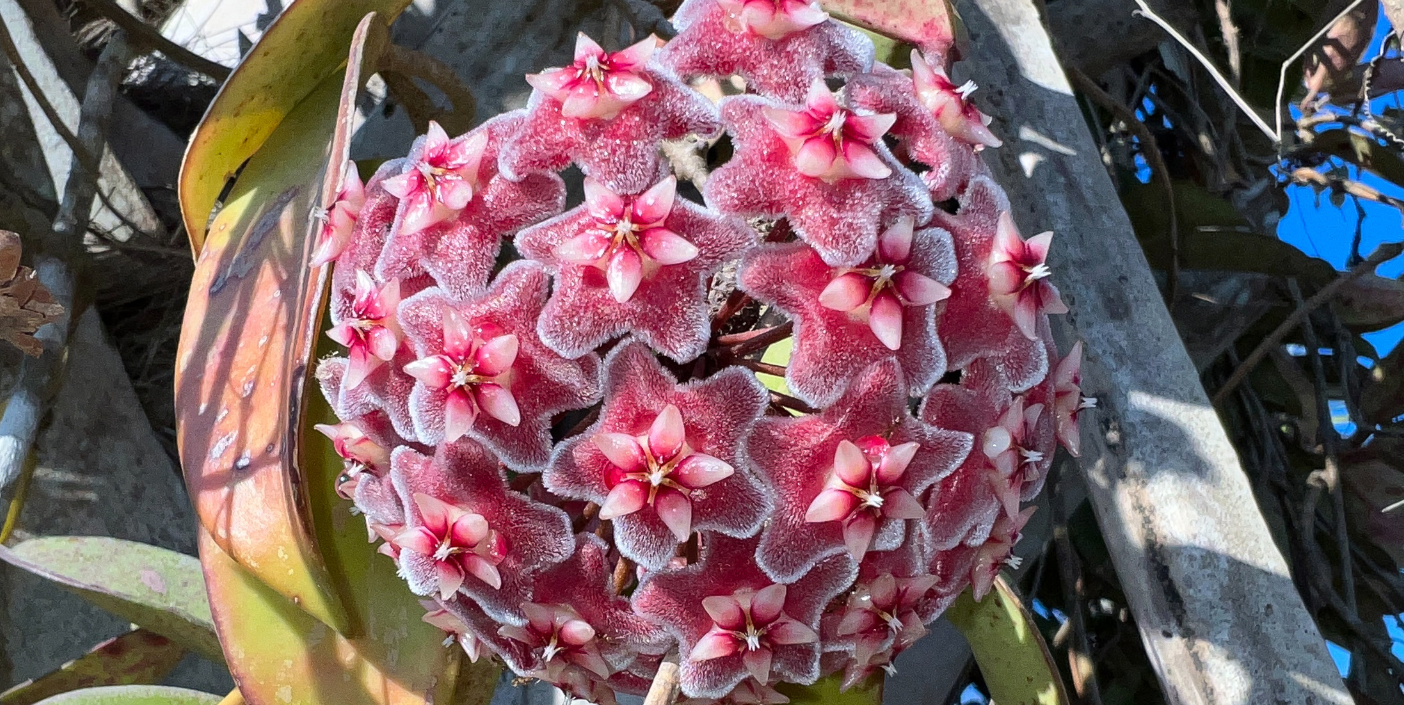
Hoyas, commonly called wax flower plants, are a genus to consider bringing into your collection. These easy-care epiphytes are resilient and beautifully diverse. Especially well suited to our Southwest Florida climate, Hoyas make an excellent addition to your home garden no matter what your botanical skill level.
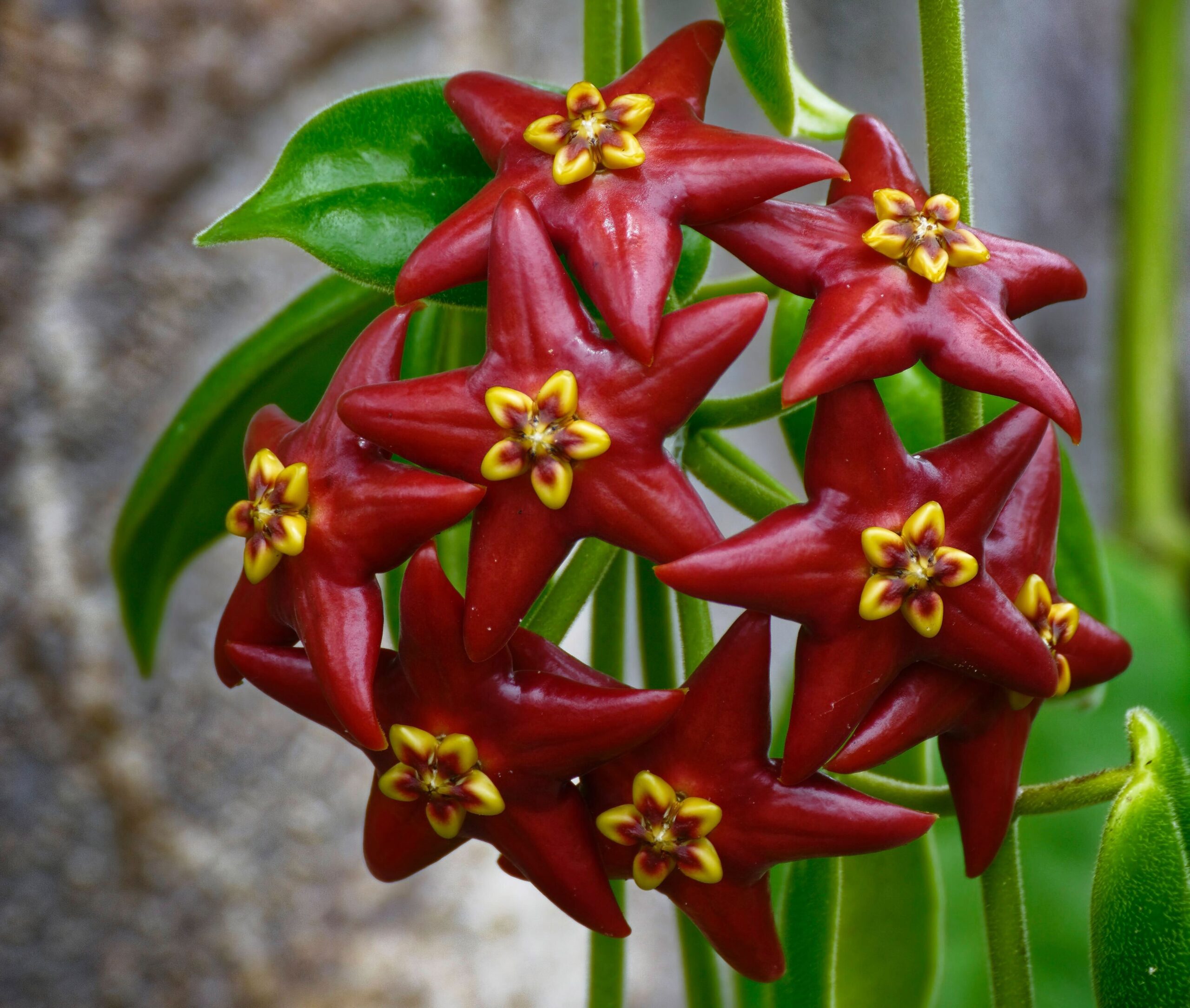
This vining genus, endemic to the region of the South Pacific, is made up of around 900 species, cultivars, and hybrids ranging from broad, heart-shaped leaves to thin, spindly ones. The leaves can be deep green, variegated, and sometimes speckled. All share a common flower shape and some boast quite fragrant, sweet blooms. These bloom clusters range in colors across the spectrum.
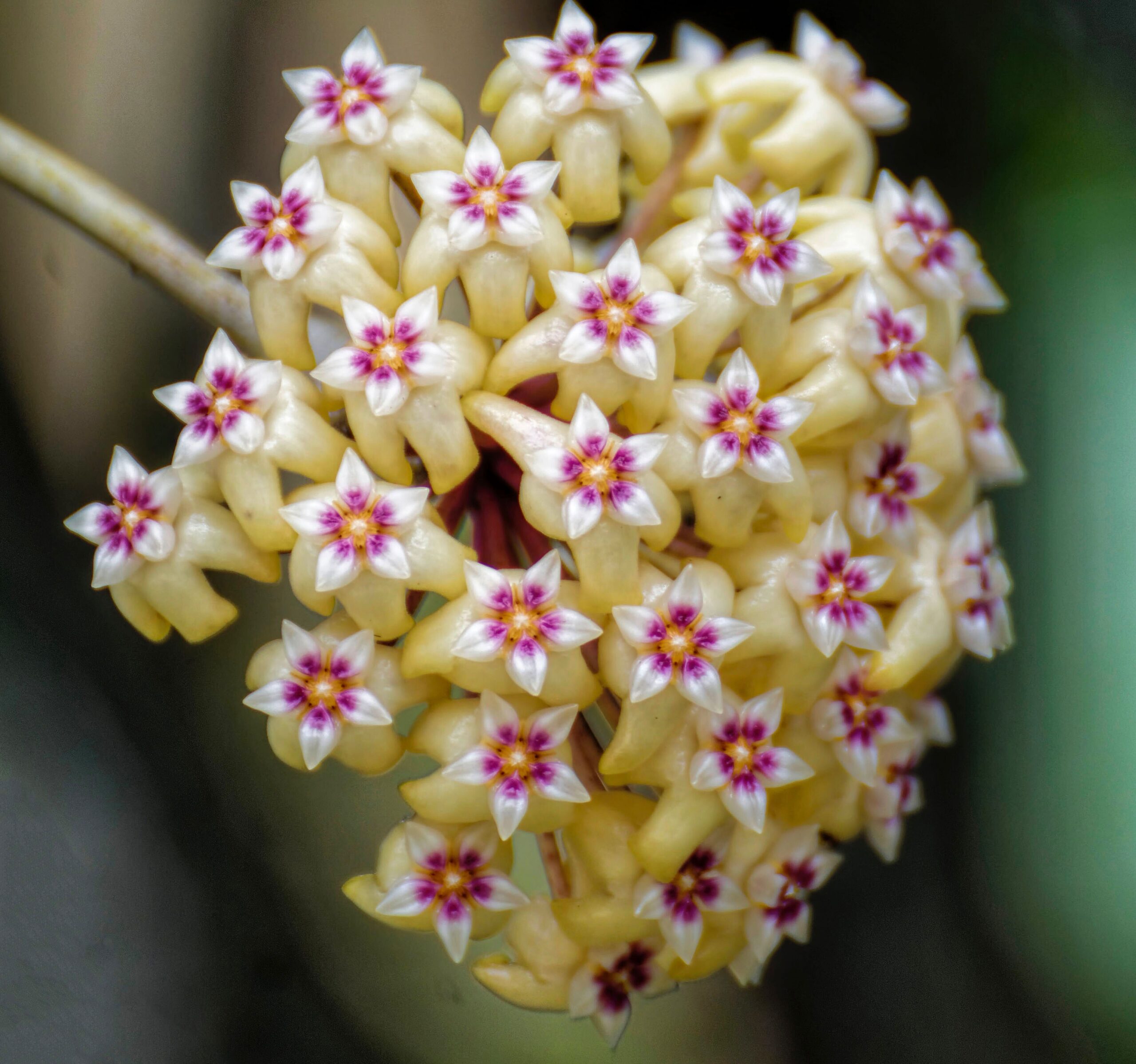
Here are some of the most coveted species and cultivars:
Hoya retusa is a native of India that looks almost like a grass. These are quite resilient with a hardy vine not easily broken without the use of hand tools. Most varieties are easily propagated and shared among friends and enthusiasts. Simply use clean shears to take a cutting, including nodes, from a vine. Propagate it either in water or in moist moss like peat or sphagnum.
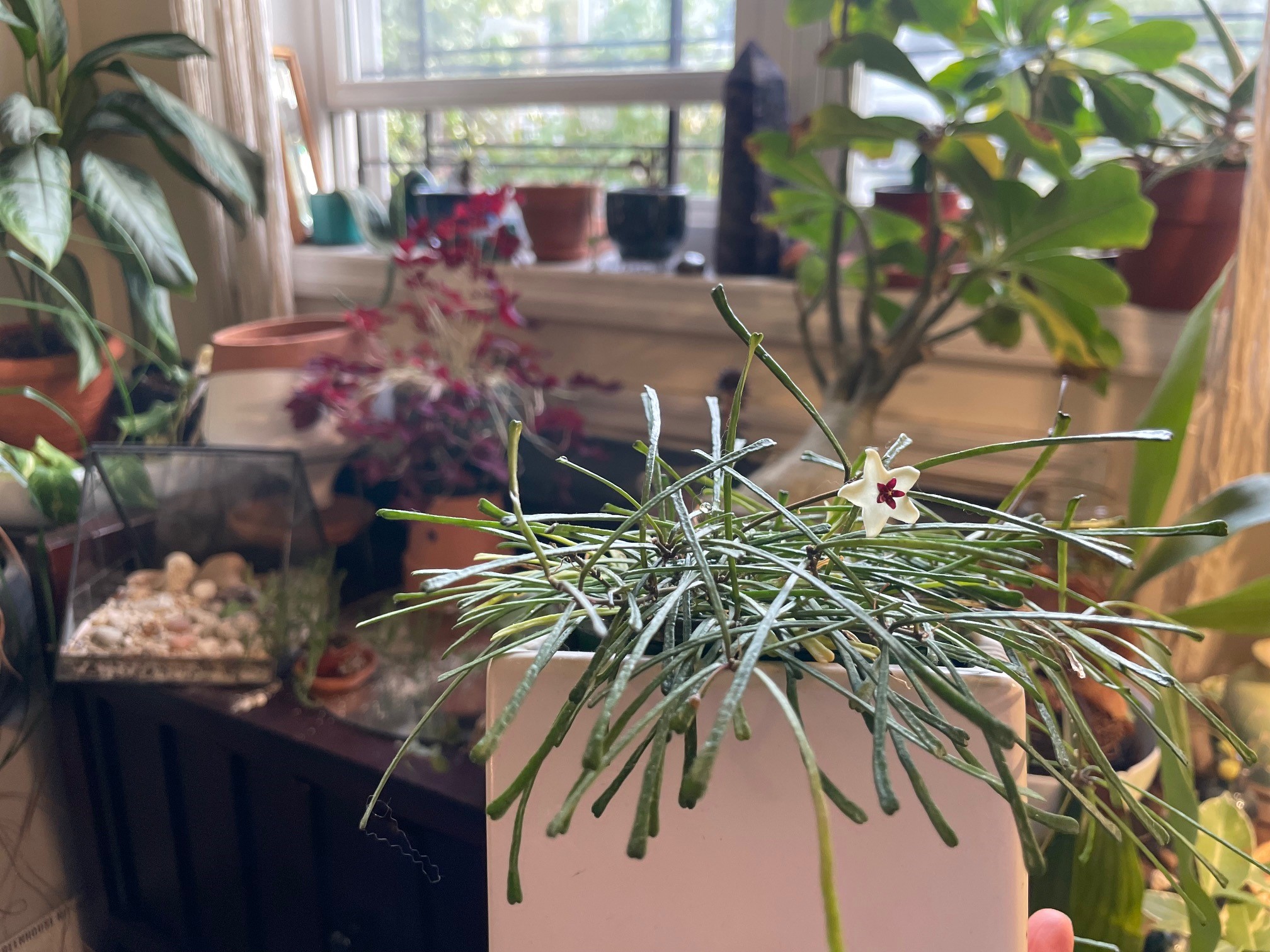
Hoya kerrii is a species well known for its adorable heart-shaped leaves. Usually sold as a single leaf cutting, without the node attached (or without multiple leaves), it will remain as a single-leafed, compact plant through its life cycle.
Hoya carnosa ‘Compacta’, also referred to as ‘Hindu Rope,’ has clustered crinkly leaves that appear as one long rope. This variety, like many other cultivars, is available as variegated and as solid dark speckled greens.
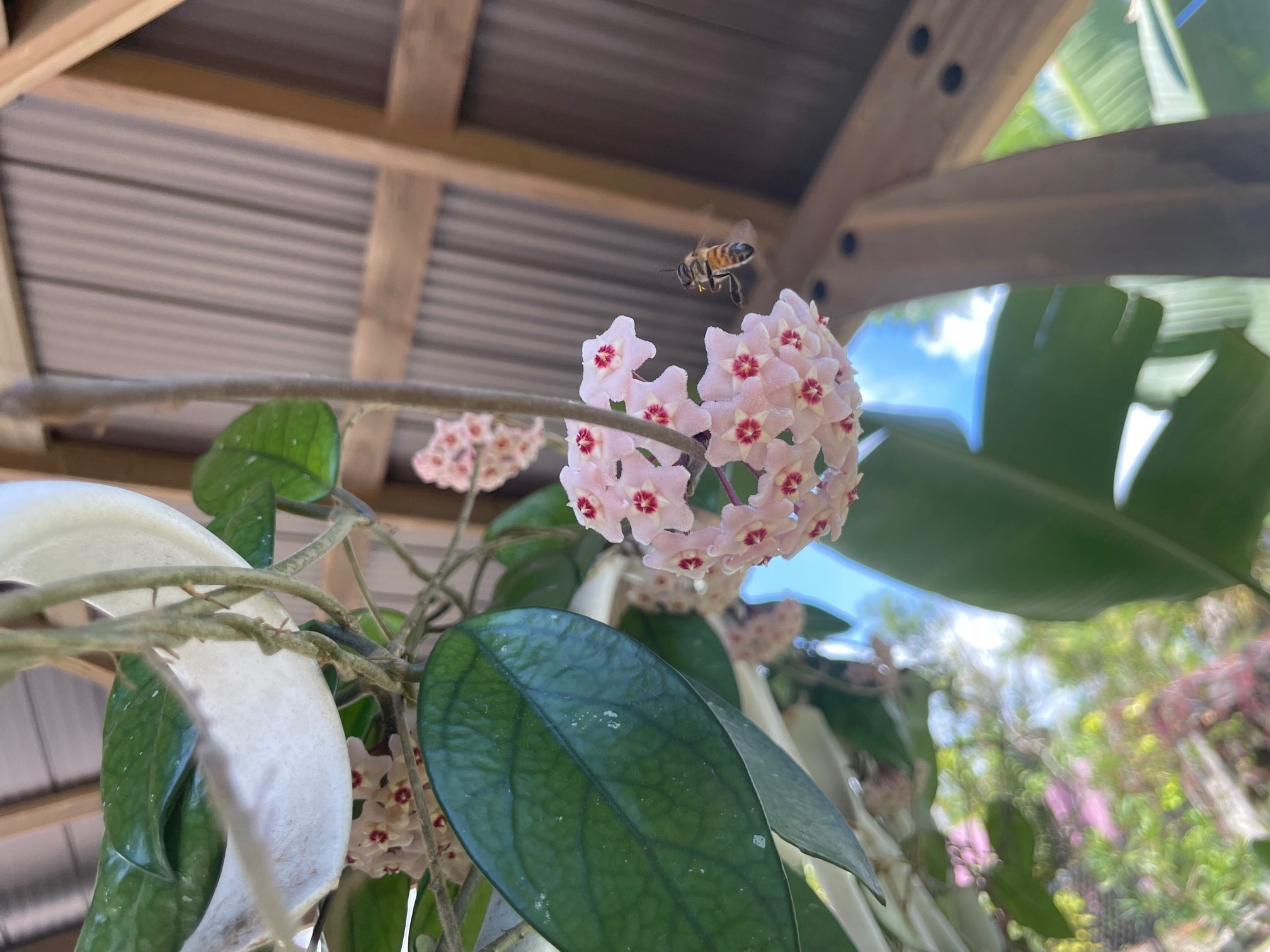
Hoya wayetti ‘Tricolor’ is another favorite cultivar for its interesting green, white, and pink variegation. Some Hoyas are known to turn pink when they have achieved perfect amounts of light.

Caring for Hoyas
Most Hoyas prefer moderate, indirect sun and the shade of a canopy, but they can grow in a variety of lighting levels, even indoors in lower light conditions. Hoyas are an epiphytic genus and in nature, grow on surfaces of trees. They are succulent or semi-succulent vines that prefer a good amount of humidity and low to moderate water. For soil, they prefer a loose airy mix or an orchid type of growing medium consisting of bark, perlite, or another aggregate, with a small amount of organic matter. I use a mixture of pine bark, potting mix, and perlite for my Hoyas. They can tolerate a well-draining watering about once every two weeks and prefer a small pot usually less than 6 inches, especially if kept indoors.
You can see Hoyas among our collections during your next visit to Naples Botanical Garden, growing on trees in the Lea Asian Garden as well as in tall planters in the McCann Palm Court outside Fogg Café.

About the Author
Kristin Hood is the Stewardship Coordinator for Naples Botanical Garden. Longtime plant enthusiast and co-owner of Plant Parenthood NYC.


